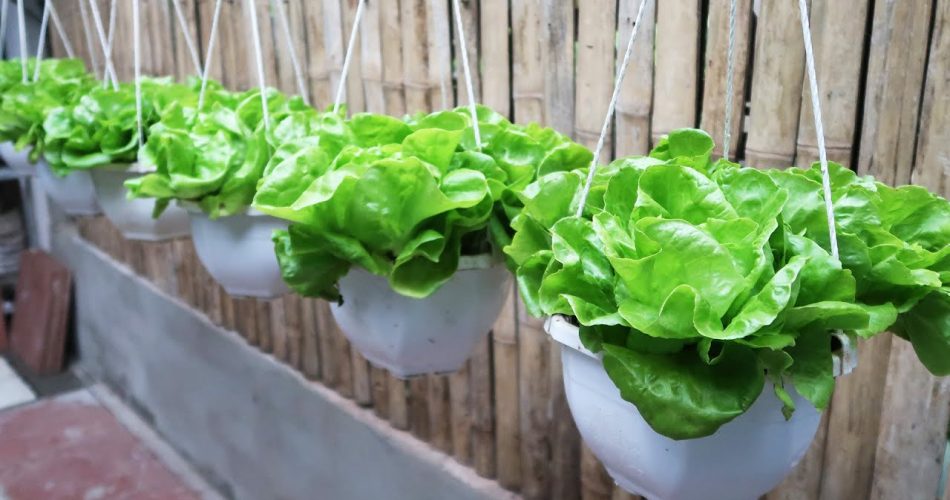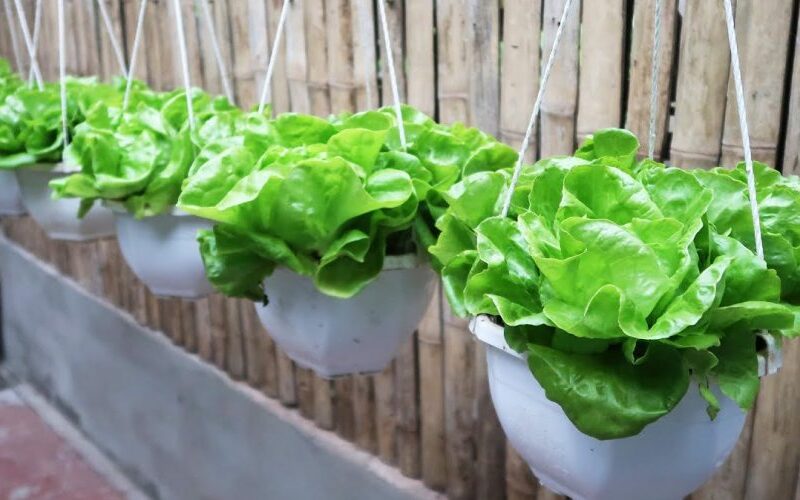
1. Choosing the Right Lettuce Variety
The success of hanging lettuce largely depends on the variety chosen. Opt for lettuce types that are well-suited for container or basket growth. Loose-leaf varieties such as Butterhead and Romaine are excellent options. These varieties are adaptable to limited space conditions and can provide a steady yield through a cut-and-come-again harvest method.
2. Selecting Hanging Containers
The choice of container is crucial for the health and growth of hanging lettuce. Containers should offer ample space for growth and feature good drainage to prevent waterlogging. Hanging baskets lined with coco coir are ideal, as they ensure a breathable environment for the roots while retaining moisture. Make sure the containers come with robust hooks for secure hanging.
3. Ideal Growing Location
Identify a location that receives partial sunlight for 4-6 hours daily. This can be on a balcony, patio, or near a sunny window. The site should allow for gentle movement of the lettuce in the breeze, which helps in strengthening the plant stems. Proper exposure to sunlight is essential for photosynthesis without causing the plants to wilt or burn.
4. Planting Lettuce Seeds or Seedlings
You can start your hanging lettuce from seeds or seedlings. Use well-draining potting soil as the medium. For seeds, scatter them evenly across the soil surface. For seedlings, ensure they are spaced out to avoid overcrowding. After planting, water the soil gently to settle the seeds or seedlings in, keeping the soil moist but not waterlogged.
5. Hanging the Containers
Once your lettuce is planted, hang the containers using sturdy hooks or brackets, making sure they are securely fastened to prevent falls. This not only maximizes your space but also adds a vertical element of greenery to your home.
6. Watering and Care
Lettuce needs consistent moisture to thrive. Water your plants regularly, ensuring the soil stays moist but not soggy. To check, insert a finger into the soil; if the top inch is dry, it’s time to water. Water at the base of the plant to avoid wetting the leaves, which could lead to disease.
7. Harvesting
Begin harvesting when the lettuce looks mature enough, cutting the outer leaves and allowing the center leaves to keep growing. This practice encourages continuous production throughout the season. For the best flavor and texture, harvest in the early morning.
Conclusion
By following these simple steps, you can successfully grow hanging lettuce and enjoy the bounty of fresh, homegrown greens. This method not only conserves space but also provides the joy and satisfaction of cultivating your own food, enhancing your meals with the freshest ingredients. Whether you have a small balcony or just a sunny window, hanging lettuce is a delightful way to bring more greenery and healthful eating into your life.
